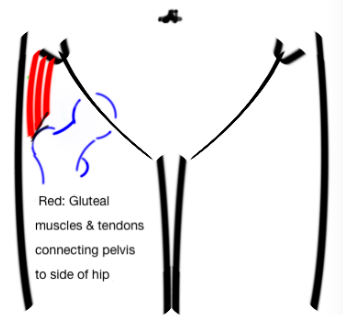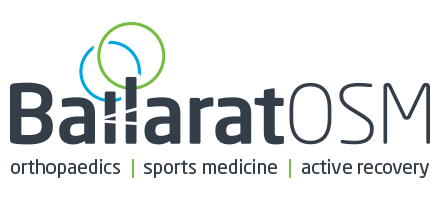The paradigm of “trochanteric bursitis” has changed. The old days of cortisone are gone.
Patients present with pain over the outer aspect of their hip, it can radiate down as far as the knee. It is exacerbated by walking, and can be excruciating to lay on in bed. The pain seems to be caused by a tendinopathy of the gluteal tendons. Tendinopathy means wear and tear (degeneration) of the tendon. Most often it’s the undersurface of the gluteus minimus and medius, anteromedially where they insert on the greater trochanter. Bursitis per se is relative rare – it can occur in combination, and injecting cortisone into the bursa does seem to offer transient relief. But the main pathology is tendinopathy, cortisone makes it feel better briefly, but doesn’t help it heal.
Many tendinopathies settle with exercises, as long as they are the right exercises! For those that don’t respond to exercises, or are too painful to exercise, other treatments are needed. PRP (Platelet Rich Plasma) or ABI (Autologous Blood Injection) for tennis elbow has been the obvious prototype. Non insertional achilles tendinopathies also respond well, patella tendinopathy if there is not extensive cystic degeneration, even hamstring origin pain may benefit.
A Sports Physician – Jane Fitzpatrick – presented the results of her hip (trochanteric) injections at the Victorian Orthopaedic Association Annual Meeting in February 2018 – and the better results with PRP treatment were startling. Greg Harris, our own Sports Physician & his registrar Anthony Hipsley – perform these injections at BallaratOSM under ultrasound control. Following the injection a few patients may need crutches for a few days, it takes a few weeks to start feeling the improvement, but by three months most patients are well ahead. The Sports Physician role includes assessing the patient, considering the treatment modalities, and where necessary performing the injections.
Surgery is occasionally required if there’s a substantial tear of the tendon. Respecting the rules of tendon repair surgery – bone spurs and degenerate tissue need to be removed down to bleeding bone, transosseous sutures, with a large footprint of tendon being compressed against the bone, reduce extrinsic forces by performing an ITB lengthening, and then settling in for a long recovery. For a large tear – three months of crutches, then three months of strengthening exercises, and patience. Unlike most of our Rapid Recovery protocols, these take time. At six months most patients are good, but the improvements keep happening out to three years when the muscle has fully recovered. It’s lucky then that the vast majority of patients are not completely torn, can be treated with the PRP, and will never come to surgery.

